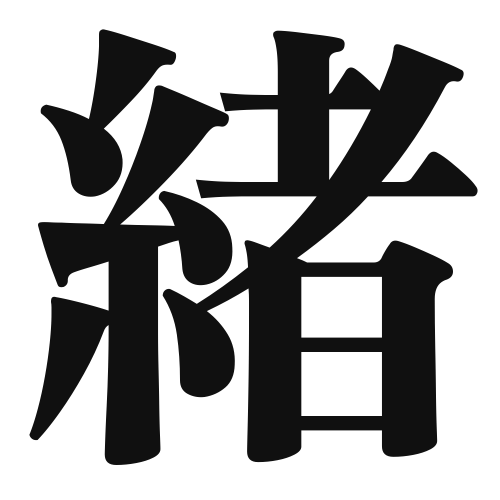1. Overview of Meaning
The kanji “緒” (pronounced “sho” or “o”) generally means “thread” or “cord.” It can also refer to the beginning or the start of something, symbolizing a connection or a link between elements.
2. Formation and Radical
Formation of the Kanji: The kanji “緒” is a compound character that combines elements to convey its meaning. It consists of the radical “糸” (meaning “thread”) and the phonetic component “余,” which contributes to its pronunciation.
Radical: The radical of “緒” is “糸,” which is commonly associated with threads, textiles, and connections.
3. Examples of Usage
Common Words and Phrases: Some frequently used words that include “緒” are “緒言” (shogen – preface) and “緒戦” (shosen – initial battle).
Example Sentences in Daily Conversation:
- このプロジェクトの緒をつけるのは大変だった。 (Starting this project was quite challenging.)
- 彼女は新しい仕事の緒を掴んだ。 (She has grasped the thread of her new job.)
4. Synonyms and Antonyms
Similar Kanji: A similar kanji is “線” (sen – line), which also relates to threads but emphasizes a straight or linear aspect. “緒” implies a more complex or intertwined connection.
Opposite Kanji: An antonym could be “断” (dan – to cut), which signifies separation or disconnection, contrasting with the idea of connection inherent in “緒.”
5. Cultural and Historical Background
Relation to Japanese Culture: In Japanese culture, “緒” often symbolizes the beginnings of relationships or endeavors, reflecting the importance of connections in social and familial contexts.
Proverbs and Idioms: An example of an idiom is “緒を結ぶ” (o wo musubu – to tie the thread), which means to establish a connection or relationship, highlighting the significance of “緒” in interpersonal dynamics.
